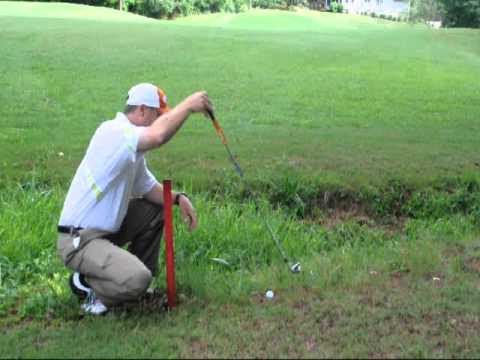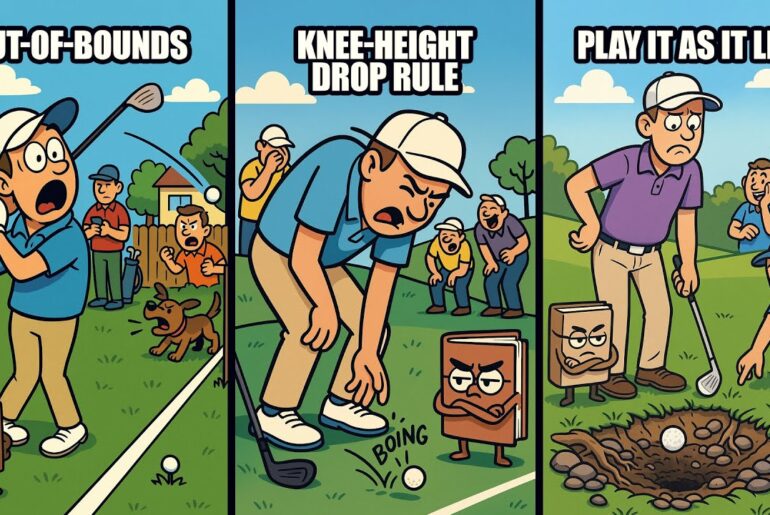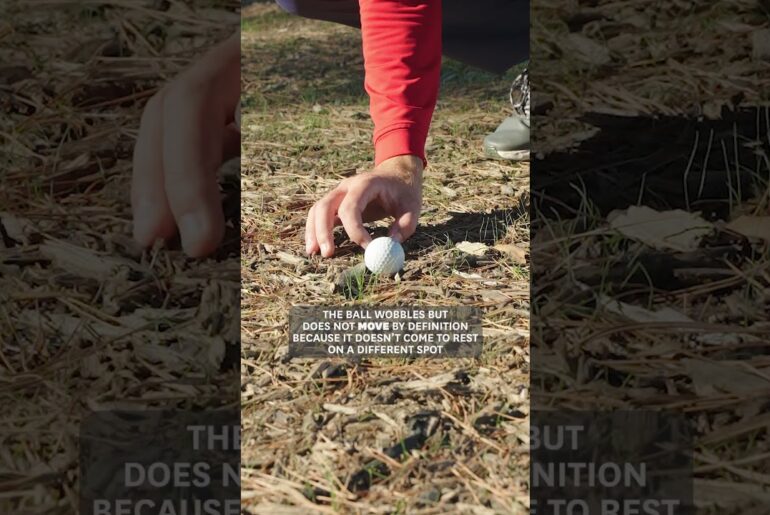Rule 26 — Water Hazards
(Including Lateral Water Hazards)
Rule 26-1 It is a question of fact whether a ball lost after having been struck toward a water hazard is lost inside or outside the hazard. In order to treat the ball as lost in the hazard, there must be reasonable evidence that the ball lodged in it. In the absence of such evidence, the ball must be treated as a lost ball and Rule 27 applies.
Regular Water Hazard (Yellow Stakes)
If a ball is in or is lost in a water hazard (whether the ball lies in water or not), the player may under penalty of one stroke:
a. Play a ball nearly as possible at the spot from which the original ball was last played.
b. Drop a ball behind the water hazard, keeping the point at which the original ball last crossed the margin of the water hazard directly between the hole and the spot on which the ball is dropped, with no limit to how far behind the water hazard the ball my be dropped.
Regular Water Hazard (Red Stakes)
a. Play a ball nearly as possible at the spot from which the original ball was last played.
b. Drop a ball behind the water hazard; keeping the point at which the original ball last crossed the margin of the water hazard directly between the hole and the spot on which the ball is dropped, with no limit to how far behind the water hazard, the ball may be dropped.
c. Drop a ball outside the water hazard within two club lengths of and not nearer the hole than the point where the original ball last crossed the margin of the water hazard.
d. Drop a ball outside the water hazard within two club lengths of and not nearer the hole than a point on the opposite margin of the water hazard equidistant from the hole.
The ball may be cleaned when lifted under this Rule.







